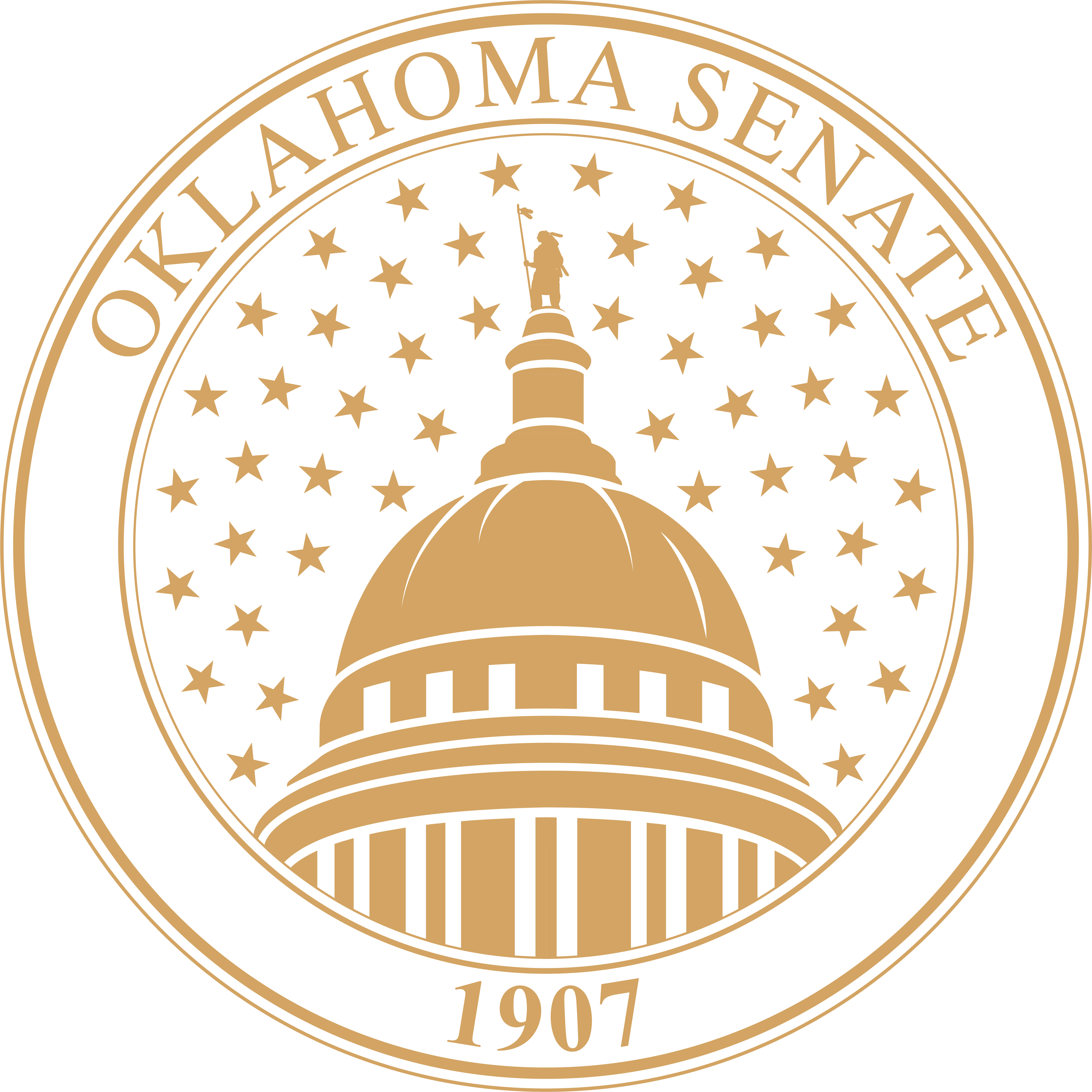Sen. Herbert Outlines Blueprint for Passenger Rail Service, Three Phase Plan Would Link State with Nat'l Rail Network
State Senator Dave Herbert has unveiled a master plan for the expansion of passenger rail service in Oklahoma that would link Tulsa, Oklahoma City and northern Oklahoma with Amtrak lines running the length of the country.
The three-phase program is contingent on the passage of SJR 37, a proposal by Sen. Herbert that would ask Oklahoma voters to temporarily raise the state gas tax by one-cent and use the revenue to expand rail service.
"I think it's important to have a blueprint in place for an Oklahoma passenger rail network, one that maximizes the tourism and economic development benefits of train service. I don't want to get into a situation where we start generating revenue, but really don't have a detailed program for how to use it," said Senator Herbert.
The Midwest City legislator plans to introduce the program in a legislative resolution that will be considered by lawmakers in the coming weeks.
Under the first phase of Senator Herbert's plan, the "Heartland Flyer" route that currently links Oklahoma City and Fort Worth would be extended to Newton, Kansas where it would tie in with Amtrak's "Southwest Limited" line. The connection would allow Oklahomans to reach Kansas City and Chicago to the east and Los Angeles to the West.
Phase one would also link Oklahoma City and Tulsa with a high-speed rail line that would accommodate both cross-country Amtrak trains and intrastate trains serving the state's two major metro areas.
"Phase one would accomplish two things: It would link Oklahoma with the major Amtrak lines that serve the country and connect our two largest cities with a rail line that could handle everything from daily commuter traffic to cross country trains. Oklahomans could get on a train in Oklahoma City and travel to Tulsa, Kansas City, Chicago, Los Angeles or some point in between," said Senator Herbert.
"By linking ourselves to the national passenger rail network, we'll open the state up to all kinds of new economic development opportunities. It will increase the likelihood of tourists traveling to Oklahoma to spend their dollars here."
Phase one would be financed with gas tax revenue raised by SJR 37 and matching federal dollars. With that revenue, work would begin on the rail lines between Oklahoma City and Tulsa and Oklahoma City and Newton, Kansas. The Newton line could be operational by as early as the middle of next year.
"I think it's important to put passenger rail service on a fast track in Oklahoma. Every day that we delay costs us in terms of tourism dollars and economic benefits," said Senator Herbert.
Phase two calls for the examination of passenger rail "feeder" lines linking Oklahoma City and Tulsa with cities across the state. Phase three would explore excursion and sightseeing trains to advance the cause of tourism in Oklahoma.
"This type of rail network would complete the Oklahoma tourism package. One of the knocks on our state is that tourists have to travel everywhere by car. With state-of-the-art passenger rail service, we make our state that much more tourist friendly," said Senator Herbert.
"I think the Heartland Flyer route between Oklahoma City and Forth Worth has proved how beneficial rail service can be. There's no reason to believe its success won't be repeated in other areas that are ultimately linked to a rail network."
While the three-phase program is important, the key to Oklahoma's passenger rail future continues to be funding, according to Senator Herbert.
"If voters don't get an opportunity to vote on passenger rail, Oklahoma can kiss federal matching money and all the potential benefits of train service goodbye. That's why it's so important to get the gas tax before a vote of people."
SJR 37 has been approved by the Senate and is currently awaiting House action. If it receives legislative approval it would then go to a statewide vote.
A Blueprint for the Oklahoma Passenger Rail Network
PHASE ONE
Extend the "Heartland Flyer" to Newton Kansas to connect with Amtrak's "Southwest Limited." The connection would provide Oklahoma citizens rail passenger service to Kansas City and Chicago to the east and Los Angeles to the west.
Construct a 21st century passenger rail system between Oklahoma City and Tulsa which will accommodate both highspeed cross country Amtrak trains and high speed trains operating between the two cities on an intrastate basis.
Preliminary Plan
A portion of the first revenues generated by Senate Joint Resolution 37 would be expended to connect the "Heartland Flyer" with Amtrak's "Southwest Limited." Track and Grade Crossing Safety upgrades should be authorized by ODOT in early 2001 and passenger service to Newton, Kansas should begin in mid-year.
Secure matching federal funds to realign, rebuild and grade separate (where necessary) the rail line between Oklahoma City and Tulsa. Secure matching federal funds to purchase passenger rail equipment for intrastate use.
PHASE TWO
Evaluate passenger rail feeder lines which would connect with the Tulsa and Oklahoma City intrastate service such as: Bartlesville; Claremore, Muskogee; Okmulgee; Guthrie; Perry; El Reno; Chickasha; Norman; Shawnee and other cities. Secure matching federal funds to provide rail service to those communities where rail service is feasible and supported by its citizens.
PHASE THREE
Provide assistance to excursion and sight seeing trains operations that further the cause of tourism in Oklahoma.
 Oklahoma Senate
Oklahoma Senate

